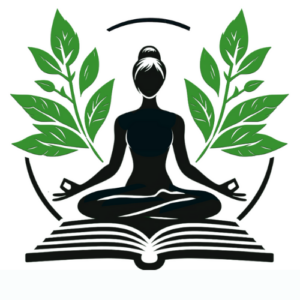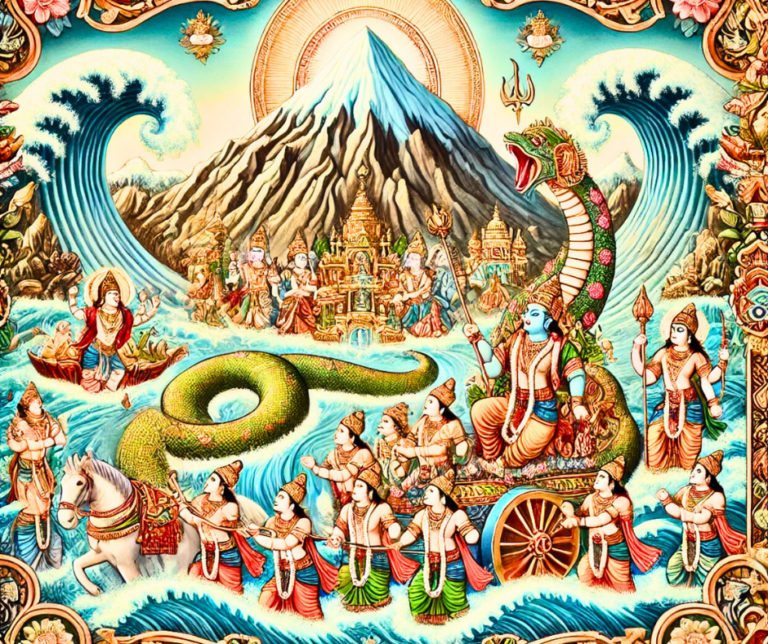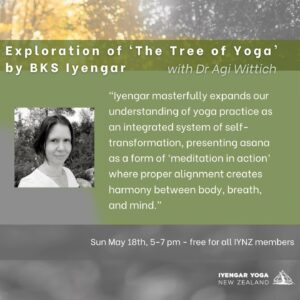In “The Tree of Yoga,” B.K.S. Iyengar offers a profound interpretation of the Amṛta Manthana (अमृत मंथन), revealing how this ancient mythological tale contains deep insights into the practice of pranayama.
The story begins with a cosmic struggle between two opposing forces: the angels (devas) who embodied dharma and virtue, and the demons (asuras) who represented vice. As Iyengar recounts, when the physically stronger demons began to overpower the angels, the devas sought divine intervention from Vishnu.
The solution came in the form of an extraordinary endeavor – churning the cosmic Ocean of Milk to extract amrita, the elixir of immortality. The process required several divine elements:
- Mount Meru served as the churning rod
- Adisesha, the king of serpents, became the churning rope
- The demons, being stronger, held the snake’s head
- The angels took position at the tail
- When the mountain began to sink, Vishnu himself manifested as a giant turtle (Kurma) to support it from below
Iyengar’s Yogic Interpretation
Iyengar transforms this cosmic drama into an intimate metaphor for pranayama practice. In his direct words:
“This churning of the mountain is nothing but inhalation and exhalation. Like the mountain churning the ocean, the spine acts as a churning rod for breath in our body.”
This interpretation reveals several layers of meaning. First, the churning process represents the continuous cycle of inhalation and exhalation. As Iyengar explains:
“When inhalation and exhalation take place, the spine sends energy flashing forwards, backwards, upwards and downwards to produce the elixir of life, or jīvāmṛta, in our system.”
Iyengar draws a profound parallel between Vishnu and the individual soul:
“Lord Visnu in this story is the same as purusa, the soul, in human beings. Visnu, in the form of our innermost self, or atma, causes us to breathe and thereby draw on the external energies which, at their gross level, contain the nuclear energies of the elixir of life.”
The Living Practice
Through this interpretation, each breath becomes a sacred act of transformation. The spine, like Mount Meru, serves as the central axis through which the breath’s energy is churned. This process generates what he calls “jīvāmṛta” – our own internal elixir of life.
The metaphor illuminates several key aspects of pranayama:
- The spine’s central role in energy transformation
- The multidirectional flow of prana (life force)
- The connection between breath and consciousness
- The potential for each breath to generate vital energy
This interpretation exemplifies Iyengar’s genius in making ancient wisdom accessible and practical. By reframing this cosmic story as a metaphor for pranayama, he reveals how the mythological quest for immortality parallels our own journey toward transformation through yogic practice.
Through this lens, each breath becomes an opportunity to participate in our own version of the cosmic churning, generating vital energy and accessing deeper levels of consciousness through the simple yet profound practice of mindful breathing.




